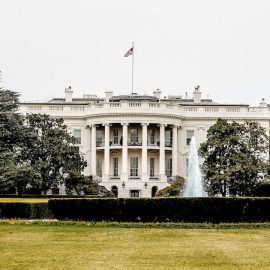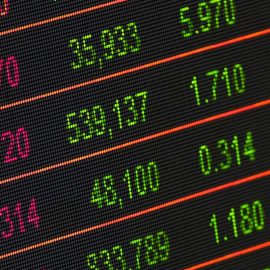
This is a free excerpt from one of Shortform’s Articles. We give you all the important information you need to know about current events and more.
Don't miss out on the whole story. Sign up for a free trial here .
What is the SAVE program? Who will it affect? How do you know if you’re eligible?
More than 43 million US students leave college with federal student loan debt—a crushing burden that forces many to forego buying homes and delay key life milestones like having children. President Joe Biden’s income-driven student loan repayment program, SAVE, aims to bring borrowers relief.
Here’s a look at the SAVE program, and whether or not you may qualify.
Saving on a Valuable Education (SAVE)
More than 43 million US students have federal student loan debt—with the average borrower owing $37,717 and the country as a whole more than $1.64 trillion. Student loan debt has crushing impacts on borrowers and the economy, rendering college attendees unable to buy homes; forcing them to delay marriage, childbearing, and retirement; widening the racial income gap; slowing new business growth, and dampening consumer spending.
In response to these challenges, last month President Biden announced the final details of his income-driven student loan repayment program—the Saving on a Valuable Education (SAVE) program—which will invest hundreds of billions of dollars over the next decade to bring relief to borrowers.
Background
SAVE is an Income-Driven Repayment (IDR) plan that will lower borrowers’ monthly payments, reduce interest accrual, and speed up loan forgiveness for borrowers with lower balances. In IDR plans, monthly payments are calculated as a percentage of borrowers’ discretionary income rather than based on the total debt they owe—as is the case with standard monthly loan payment programs.
SAVE Promises and Beneficiaries
Experts say that five groups of borrowers will benefit most from the Biden Administration’s SAVE plan:
- Individuals who attended but didn’t complete college. SAVE will forgive debt after 10 years (down from 20 to 25) for borrowers with loans of $12,000 or less who have made qualifying monthly payments. This will help level the playing field for Americans who, for various reasons, didn’t or couldn’t finish their degree.
- Individuals in regions with higher housing, food, and other living costs. SAVE will protect a greater portion of earnings for borrowers in higher cost-of-living areas by subtracting more of federal poverty guidelines from their income (225%—up from 150%). The plan will also limit monthly payments at just 5% of borrowers’ discretionary income—down from 10%.
- Individuals who can’t pay the interest accruing on their loans every month. Under SAVE, the government will cover unpaid monthly interest for borrowers who make qualifying monthly payments, to prevent interest from building up and becoming an insurmountable hurdle.
- Borrowers of color. On average, SAVE will halve the lifetime payments per dollar borrowed by Black, Hispanic, American Indian, and Alaska Native individuals, making student debt more manageable for borrowers who most suffer its negative impacts and narrowing racial income gaps.
- Individuals at risk of falling behind or failing to make loan payments. SAVE will allow borrowers with smaller balances—who experience high default and delinquency rates and, to date, have been locked out of IDR plans—to sign up for the program. This will enable them to access more affordable monthly payments and loan forgiveness. Further, SAVE will automatically enroll individuals who are 75 days late on payments, potentially qualifying them for $0 monthly payments and reducing their chances of default.
SAVE Rollout
The Department of Education plans to phase in SAVE in three key stages:
- This summer the DOE will:
- Notify borrowers when they can sign up for SAVE.
- Process applications in time for borrowers to make a first payment, due in October.
- Automatically transfer borrowers currently enrolled in the Revised Pay-As-You-Earn (REPAYE) plan into SAVE.
- Enable borrowers to sign up for a provision that automatically re-enrolls them in SAVE from one year to the next (note: this option won’t be fully operational until 2024).
- On July 30, 2023, the DOE will:
- Reduce lower-income borrowers’ monthly payments by increasing the income threshold for zero-dollar payments from 150% to 225% of the poverty line.
- Bring interest limits into play, so borrowers who make qualifying monthly payments won’t see their loan balance increase as a result of unpaid interest.
- In 2024 the DOE will:
- Cut borrowers’ payments in half—from 10% to 5% of their discretionary income (taking place in July).
- Forgive the loans of borrowers who have made 10 years of qualified payments on balances of $12,000 or less.
- Automatically enroll borrowers who are 75 days late on payments in SAVE, provided that they’ve permitted the DOE to access their tax information.

Want to fast-track your learning? With Shortform, you’ll gain insights you won't find anywhere else .
Here's what you’ll get when you sign up for Shortform :
- Complicated ideas explained in simple and concise ways
- Smart analysis that connects what you’re reading to other key concepts
- Writing with zero fluff because we know how important your time is






